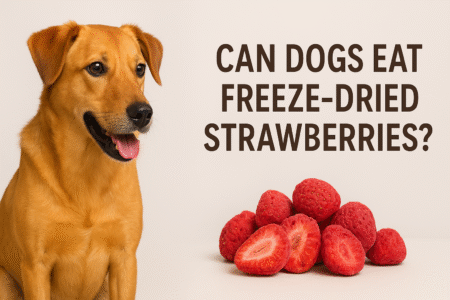Yes, dogs can eat dried apples, but only in moderation as they are more concentrated in sugar than fresh apples, When it comes to dog food, many pet owners want to know if certain fruits like apples are safe for their furry friends. The answer is yes, dogs can eat apples, including dried apples, but there are important things to consider.
Certain varieties of apples, such as Red Delicious, Honeycrisp, and Granny Smith, are more common in grocery stores and can be a nutritious snack for your dog. However, dried apples may contain added sugars or preservatives that could pose risks, so it’s important to ensure they’re safe and free from harmful chemicals.
When feeding your dog apples, always remove the seeds, as they contain cyanide, which can be toxic. Apples can provide beneficial nutrients like vitamins A and C for your dog, but it’s important not to overfeed. Too many apples or treats may lead to digestive issues.
To learn more about the benefits and risks of apples for dogs, you can read further in this PetMD article on apples and dogs.
As a general rule, it’s always best to consult with your veterinarian to ensure you’re offering the right balance of snacks for your pet, especially for puppies or dogs with sensitive stomachs. Keeping the risks in mind and feeding treats in moderation is key to maintaining a healthy and happy life for your dog.

When it comes to Dogs life care, it’s important to know what treats are safe for your furry friend. Dog food can sometimes include unusual items like dried apples, which are an excellent snack choice for dogs in moderation.
Dried apples are a good source of essential vitamins like A and C, and they also provide fiber for your dog. However, they’re not a replacement for regular meals since they are low in protein and fat. It’s important to remove the seeds and the core, as these parts can be harmful to your dog.
For a cool treat on warmer days, try freezing dried apple slices. Just make sure there are no added sugars or artificial flavorings. Dried apples can be especially beneficial for senior dogs when given sparingly.
If you want more insights on how apples can be a healthy snack for dogs, you can check out this AKC guide on apples and dogs.
Is dry apple good for dogs?
Dried apples, such as Gala, Granny Smith, or Pink Lady, are delicious snacks, and many pet owners wonder if they’re safe for their canine friends. While these apples come in different varieties, they can be a healthy addition to dogs’ food when prepared correctly. Dried apples contain vitamins, including vitamin A, which can benefit a dog’s dietary needs. However, it’s important to note that the seeds, stems, and leaves of apples contain cyanide, a toxic compound that can be harmful to dogs. According to general pet care guidelines, it’s crucial to avoid feeding your dog these parts of the apple. Some apple types, like crab apples, can be particularly risky due to their higher toxicity levels. For more details on safe feeding practices for dogs, you can explore the Wikipedia page on dog food. To be safer, consider serving your dog applesauce made from safe apples that are free of harmful parts. Proper feeding advice for pet care also includes removing any potential poison risks, as apple poisoning can cause symptoms like upset stomachs or even more severe gastrointestinal issues.
Are Apples Good for Dogs?
How Much Apple Can My Dog Eat? While apples are safe for your dog to eat, it’s important to only give them to your dog in moderation. Typically, one to three slices is a good rule of thumb. When you feed your dog an apple, make sure to wash it and cut the fruit into slices.
When thinking about adding apples to your dog’s diet, remember that they can be a good source of vitamin C, vitamin A, potassium, and fiber. These nutrients help with dogs’ life care by supporting digestion and helping maintain a healthy weight. However, it’s important to give your dog the right amount of apples—not too much.
A low-calorie treat like apple can satisfy their sweet tooth, but be mindful of the sugar content. Offering a whole apple or apple peel can be a fun way to let your dog chew, but be sure to remove the seeds, as they can harm your dog.
If you’re concerned about dental care, the chewing action can help clean your teeth, but regular brushing and veterinary dental cleanings are still necessary to keep those teeth sparkling. Always supervise and remember, that human foods like chocolate are a no-go, so stick with the simple and healthy option of apples!

When giving your dog apples, it’s important to offer them as a treat rather than a main part of their dog’s food. Apples are nutritious and packed with essential vitamins like Vitamin C, A, and K, as well as minerals such as zinc, iron, and fatty acids.
These nutrients can play a role in strengthening the dog’s immune system, reducing the risk of certain bone diseases, and improving the digestive system. A small amount of apple, usually a few slices, can be an excellent way to add fiber to your dog’s diet and can also help with skin conditions. However, too much could lead to stomach upset, so it’s best to limit the amount given.
As with any new treat, moderation is key for the health and happiness of your dog. I’ve personally found that giving my dog a couple of small apple slices not only makes him happy but also helps prevent the further development of health issues, especially with his digestion.
When it comes to adding apples to your dog’s diet, you should proceed with caution. While apples are packed with vitamin A, vitamin C, and dietary fiber, they can also pose some health risks if not fed properly.

The apple seeds and core contain cyanide, a toxin that can be harmful to dogs if consumed in large quantities. To be safe, always remove the seeds and core before offering a small amount of the fruit to your dog. Apples can provide several health benefits, such as freshening breath and helping to clean teeth, but only when given in a low amount.
Too much can lead to digestive problems or even discomfort. Remember, allow your dog to chew it thoroughly to avoid the risk of them trying to swallow large chunks. Keep the intake controlled, and always monitor your dog for any problems after feeding them apples. This approach ensures the safety of their overall health while enjoying a tasty snack!
Can Dog Eat Apple Seeds?
If your dog eats apple seeds, there’s a risk due to the toxin they contain called cyanide. When apple seeds are swallowed or chewed, this cyanide can be released, causing potential harm to your dog’s health.
The amount of cyanide in a couple of seeds is usually low, so swallowing one or two seeds won’t likely cause serious issues. But it’s important to be cautious and not feed your dog the apple core with the seeds still intact.
Apple seeds removed from the core are safe, and in addition to this precaution, apples are a fantastic treat. They’re rich in vitamin A and vitamin C, which are great for your dog’s health. The dietary fiber in apples can also help freshen breath and clean teeth, contributing to your dog’s oral health and overall dental care.
Always keep in mind that while apple cores or seeds are best removed before feeding, feeding apples can be a healthy addition to your dog’s food, but ensure you’re aware of the risks to their health.

When it comes to dogs and apple seeds, there’s a hidden health danger many pet owners might not realize. Apple seeds contain a toxic chemical called cyanide, which is a poisonous substance that can lead to serious cyanide poisoning.
If a dog swallows even a small number of seeds, it can trigger a cyanide effect. While a medium-sized dog might need to ingest an awful lot—around 100 apples worth of seeds—for a life-threatening dose, smaller dogs or those that consume an excessive number could face much higher risks.
This toxicity can lead to cyanide poisoning and hypoxia (a lack of oxygen), which causes symptoms like difficulty breathing, dilated pupils, and brick-red mucus membranes.
The cyanide toxicity from eating seeds could cause symptoms of poisoning soon after ingestion. The symptoms often depend on the amount consumed, but even a small dog could experience a toxic reaction from just a few seeds.
Dogs eating seeds is an unsafe practice, and though a few seeds might not always lead to a serious incident, the risk is not something to ignore. Always ensure that your dogs’ food is free from apple seeds and be mindful of their dog’s life care to prevent accidental poison exposure.
If your dog eats apple seeds, it’s important to understand the risks. Apple seeds contain toxic compounds called cyanogenic glycosides, which can release poison when digested. While a small number of seeds may not cause harm, eating too many can be dangerous. For example, a medium-sized dog weighing about 85 grams could potentially ingest a harmful dose if it consumes enough seeds. Based on ASPCA guidelines and some experiment findings, it’s suggested that an average toxic dose of cyanide could come from eating 54 seeds, or roughly seven apples.
Each apple typically has around 8 seeds and each seed weighs about 0.055g. Even though the apple seed itself weighs just 0.4g per apple, eating multiple seeds in one go may cause symptoms like drooling, vomiting, or worse, depending on the amount consumed. For a larger dog, it would take far more to reach the toxic dose, but grinding up seeds or consuming monster apples with many more seeds could be a higher risk.
In general, the weight of the seeds is key when considering the danger. A dog might consume as much as 0.75g of seed material from a single apple, which isn’t harmful by itself. However, if your dog eats too many seeds, like from 200 apples, it could be in trouble.
This is especially concerning since dogs’ food or snacks containing apple seeds may be sold online, and some pet webpages even downplay the danger. However, experts, like those who write studies on pet safety, always recommend being cautious. If your dog happens to munch on a few seeds, don’t panic, but keep an eye out for any signs of distress and always contact your vet for dog life care in such situations. If you’re curious about other fruits and their safety for dogs, such as boysenberries, you can read more in our guide on whether dogs can eat boysenberries.
Are Apples Bad for a Dog’s Teeth?
Yes, apples are a fantastic addition to your dog’s diet. They provide vitamin A, vitamin C and dietary fibre. They also provide a way to keep your dog’s teeth clean and can help freshen their breath. But before you feed apples to your dog, always remove the core and the seeds.

When it comes to Dogs life care, it’s important to consider the effects of different Dogs Food on your pet’s health. Apples are a popular snack for dogs, but how do they affect their teeth? While they are safe for dogs to eat in moderation, the sugars in apples can contribute to rot if proper care isn’t taken.
The water content in apples can be a bonus for hydration, but you must wash the apple properly before giving it to your dog to remove any pesticides. The apple skins are fine for most dogs, but in some cases, they could be harder to chew and may pose a choking risk.
To keep your dog’s mouth healthy, it’s a good idea to use a toothbrush after giving them apples to help away any sugars and debris. It’s unlikely that occasional apple treats will harm your dog’s teeth if you are vigilant about their dental hygiene, but moderation is key to keeping their teeth relatively safe.
When it comes to your dog’s life care, you might wonder whether apples are safe for their teeth. In moderation, apples can be a healthy dog food choice, offering vitamins and fibre. However, there are some important things to consider.
First, you should always wash apples thoroughly to remove any bacteria, germs, or pesticides that might be on the surface. These can be harmful to your dog’s health. After rinsing, it’s a good idea to cut the apple into slices or cubes to make it easier for your dog to eat and avoid any risk of choking.
Be sure to peel the apple if it’s treated with any chemicals and to remove the seeds, as they contain cyanide, a toxin that can harm your dog in large doses. The apple core and stem should also be avoided, as they can pose a choking hazard or cause digestive trouble and blockage.
Even though apples are a fruit with many benefits, the tough texture and potential for choking can be risky. Always supervise your dog when introducing new fruits or vegetables into their diet.
Can Dogs Have Apple Juice, Applesauce, or Apple Chips?
Apple chips can be a tempting snack for dogs, but it’s important to be careful. Store-bought apple chips often have added sugar, which can be harmful to your dog’s health. Too much sugar can lead to weight gain or even diabetes in the long run.
In contrast, homemade versions of apple chips, especially those with no added sugar, can be a healthier alternative. They provide fibre, which is great for digestion, but always remember to serve them in moderation. Even with dehydrated apple pieces, the fibre and water content can vary, so you should monitor how much your dog eats.
While apple chips can be a nutritious snack, store-bought versions might be less nutritious due to their sugar content. Always choose the no added sugar options if you’re feeding them to your dog, and don’t let it be a regular part of their dog’s food.
When it comes to apple chips, they can be a safe and healthy snack for your dog, but there are some important precautions to take. While apple chips are often seen as a nutritious treat, it’s crucial to ensure they’re natural and free of harmful additives.
Washing the apples well before making the chips is important to remove any pesticides or germs that could cause harm. Avoid any chips that contain added sugar, preservatives, or artificial flavouring that may not be safe for your dog’s diet.
If you’re making your apple chips, you can slice the apples thinly, making sure to remove the peel, seeds, core, and stem—these parts of the apple contain toxins like cyanide, which can be harmful in large quantities. It’s also a good idea to avoid giving your dog large amounts of any apple product at once, as it may cause digestive trouble or even a blockage.

Choking is another concern if the slices are too thick or tough to digest. Always start with a small amount and watch for any signs of digestive trouble, such as vomiting or diarrhoea.
If you’re buying apple chips from the supermarket, ensure they are treating the fruit properly and aren’t loaded with chemicals or other harmful ingredients. A small amount of apple chips can be a tasty dog food snack that your furry friend can enjoy, but like any fruits and vegetables, it’s best to serve them in moderation and pay attention to your dog’s condition after eating.
When it comes to apple chips as an occasional treat for your dog, it’s important to be mindful of the size and health of your pet. For small dogs, a teaspoon or two of apple chips should be plenty, while medium dogs can have a tablespoon or so. Large dogs might tolerate a bit more, but always monitor how they react.
Apple chips can offer vitamin C and fibre, which are great for boosting the immune system, improving skin health, and aiding in bowel movements, especially if your dog suffers from constipation. However, be careful of the extra calories they may add, especially if your dog is on a calorie-controlled diet.
The key is moderate intake—too much could cause extra treats and an increase in calorie intake. Keep in mind that apple chips should only be an occasional snack, not a regular part of your dog’s diet. This way, you avoid overloading them with sugar and extra calories, maintaining a healthy balance for their overall health.
If you’re using it as a training treat, be sure to adjust their regular food to account for the added calories. Some commercial treats may already provide similar benefits, so apple chips can be a healthier alternative every once in a while. Just remember, the key is individual tolerance—what works for one dog may not suit another, so always start with a small amount and observe your dog’s reaction.
Are Some Dogs Allergic to Apples?
When it comes to feeding dogs healthy treats, apple chips can seem like a good choice. However, like with all new foods, it’s important to observe your dog’s reaction. Some dogs may experience an allergy to apples, even though it’s less common.
Dermatitis, itching, or redness in the skin could be the first signs of a food allergy. Just like humans, dogs’ skin is the largest organ of their body and helps protect them from contaminants and allergens. If you notice your dog scratching, swelling, or rubbing its face or ears after eating apple chips, it may be a sign of a food allergy.
If your dog’s reaction seems more severe, such as vomiting, diarrhoea, or even wheezing and coughing, these can be signs of a more serious issue, like anaphylaxis. In extreme cases, this can be life-threatening, causing trouble breathing, gasping for breath, or even seizures.
If you suspect a severe allergy reaction, it’s essential to get your dog to an animal hospital or veterinarian immediately. As with any new addition to your dog’s food, always start with small amounts and stay alert to any changes in your dog’s health.
Many dog owners wonder if their furry companion can safely enjoy apple chips. Apples themselves are generally safe for most dogs, but it’s important to remember that dogs, like humans, can have allergies. Though apples are low in protein and provide beneficial nutrients like vitamins and fibre, a small number of dogs may experience allergic reactions to the fruit.
These reactions are often mild but can include headaches, swelling, or digestive upset. If your pooch has never eaten apples before, it’s wise to introduce them slowly, observing for any signs of discomfort or allergic response.
As with any new food, moderation is key. Apple chips may seem like a convenient snack, but keep in mind that they might contain added sugars or preservatives, which aren’t ideal for your dog. Always check the ingredients before offering them.
In general, it’s safest to stick to fresh apples cut into small pieces, ensuring your dog doesn’t swallow large chunks, which can be a choking hazard. Dogs life care involves being mindful of what they eat, ensuring they’re getting nutrients that support their overall health without risking illnesses.
As a responsible pet owner, it’s important to monitor your dog’s health and seek veterinary advice if you’re unsure. In case of any accidents, having pet insurance will help protect you from unexpected veterinary bills and ensure that the cost of treatment for potential allergies or illnesses is reimbursed.
How Many Apples Can Dogs Eat?
How Many Apples Can Dogs Eat? Your canine companion may love crunching on apples, but don’t let them have too much. Eating an excess of apples can lead to your dog experiencing bellyache or diarrhoea, so always serve them in moderation. Just an apple slice or two is enough to satisfy your dog’s cravings.

When it comes to feeding your canine companion, apples are a great, healthy treat, but only in moderation. A small slice of apple can be a perfect addition to your dog’s food. You can serve it as an occasional snack or mix it with their regular meals. However, too much apple can lead to digestive problems like diarrhoea or even a bellyache.
It’s important not to give them excess amounts, especially since the seeds in apples contain cyanide, which can be toxic to dogs if consumed in large quantities. If you’re unsure about how much to give, a small cube of apples is typically enough for most dogs.
Puppies or smaller dogs should only get a very small amount to avoid any potential allergic reactions or problems with digestion. Always monitor your dog after giving them an apple slice, as some may experience allergic reactions or other problems.
If you notice any unusual symptoms, like vomiting or discomfort, it’s best to contact your veterinarian immediately. As with any new food, it’s essential to start small and keep an eye on how your dog reacts.
When it comes to feeding apples to your dog, it’s important to keep in mind that dogs can enjoy them as a healthy snack or treat, but only in the right portion sizes. Generally, apples should make up no more than 10% of your dog’s overall diet, meaning they should only be a small part of their daily food intake.
Depending on your dog’s breed size and weight, the ideal portion might vary. For a small pup, a 1-inch wide slice or ¼-inch thick piece is perfect, while larger dogs might enjoy slightly bigger pieces. Chopping apples into smaller pieces helps prevent choking and ensures that each bite is easy to eat.
Just remember, the general guidelines for feeding apples are to give them in moderation, as they shouldn’t replace proper food or a well-balanced diet. Always check the amount you’re giving, and make sure the apple is safe for your dog by removing the seeds and core before serving. This will help you maintain a healthy, balanced diet and avoid overfeeding.
When it comes to feeding your dog apples, it’s important to remember that moderation is key. Apples can be a tasty treat to satisfy your dog’s cravings, but too much can lead to digestive problems like bellyache or even diarrhoea.
Start by washing and scrubbing the apple to remove any dirt, bacteria, or pesticides that might be lurking. Then, be sure to slice the apple into small cubes or thinly cut slices to avoid any choking hazard, especially if your dog is a puppy. The apple core and seeds contain cyanide, which is a toxin and can be harmful if ingested in large amounts, so it’s best to remove them entirely.

You can also consider baking apples into crispy apple chips or adding them to homemade treats like oat flour biscuits, but make sure to avoid any added sugars or nutmeg, as they could cause gastrointestinal distress or worse. Always consult your veterinarian if you’re unsure about adding apples or other fruits to your dog’s diet to avoid any allergic reaction or unforeseen problems.
When it comes to feeding apples to your dog, care is key. To ensure your dog’s health benefits, always limit consumption and prepare them properly. Remove the seeds and core, as they contain trace amounts of toxic substances like xylitol, which are toxic to dogs.
A small amount of apple is best, especially for puppies or older dogs, as too much can lead to an upset stomach or diarrhea. Always observe your dog after they eat an apple to check for any signs of an allergic reaction, like difficulty breathing or swelling. If you notice anything unusual, contact your veterinarian right away. Introducing apples into your dog’s diet can be a great sweet treat, but the best approach is to gradually add them to their meals, and monitor their reaction. If you’re also curious about other fruits like dragon fruit, you can check out our article on can dogs eat dragon fruit?
It’s also important to remember that, like any dog food, the change in diet should be done carefully. Too much at once could make them sick, so keep apples as a low-calorie snack, once or twice a week.
Conclusion:
Dried apples can be a healthy treat for dogs when given in moderation, offering essential vitamins and fibre. However, it’s crucial to remove the seeds and core to avoid potential toxicity from cyanide. While apples can benefit your dog’s health, such as supporting digestion and dental care, they should never replace a balanced diet. Always ensure that any dried apples you provide are free from harmful additives like sugars or preservatives. Consulting with a veterinarian can help ensure you’re feeding the right treats in the right amounts to keep your dog healthy and happy.
Related articles:
Can Dogs Eat Okra? Benefits, Risks, and Safe Feeding Tips!
Top 10 Best Chew Toys for Lab Puppies in 2025 (Reviews & Buying Guide)
Top 10 Best Shampoo for Pitbull Puppy in 2025 (Reviews & Buying Guide)
Top 10 Best Treats to Use for Dog Training in 2025 (Reviews & Buying Guide)
Top 10 Best Crate Pads For Destructive Dogs in 2025 (Reviews & Buying Guide)














Leave a Reply